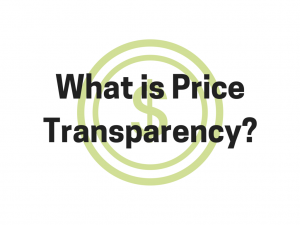What do we actually mean when we talk about price transparency in healthcare? When we talk about healthcare costs, what does cost mean to each individual stakeholder?
In the U.S., Most Patients Don’t Know The Cost of Care
In healthcare, price transparency is a term used to describe how we talk with patients, providers and payers about the costs incurred for services and subsequently, what the cost is to patients when they receive the services. In the United States, patients don’t know what the cost of health services will be for them until after they’re rendered.
The cost often can vary between providers or even among services, which can cost substantially more in one setting than they may in another. Patients are usually kept in the dark about this, however, and it’s a bit of a roulette when they seek services, especially if they are uninsured.
Cost Is NOT Equal to Value
One aspect of the cost conundrum is this: healthcare services that cost more are not necessarily of higher value. This can be difficult to comprehend because, in most industries, cost is linked with quality. We pay more for certain products and services with the expectation that they are of a higher quality. In healthcare, this is patently false: there is no demonstrable link between cost and quality.
Costs are Rising
Costs are rising, patients are sicker and requiring more services — and more intense services. Readmissions go up. The cycle continues. For patients who are underinsured, it puts more financial stress on their families, especially when you consider that 62% of bankruptcies are filed as a direct result of medical or health issues.
Providers, Payers and Patients
Talking about how much services cost, not just for patients but for the providers and the payers who will be reimbursing, is one way to combat the growing confusion around the cost of services. Transparency is a clear way to indicate where high quality, cost-effective care is routinely practiced, and what providers may be coming up short.
Of course, cost means different things to different people:
Cost for Patients
For patients, cost refers to the out of pocket expense to be paid for the services they received and may include their deductibles, copayments and coinsurance.
Cost for Providers
For the providers, cost refers to the expense incurred for treating those patients.
Cost for Insurers
For Insurers, cost is the amount payable to the provider for rendering those services, and/or what amount will be reimbursable to the patient.
Cost for Employers
And for employers, cost refers to the amount they provide in benefits, premiums and the claims paid.
How do you promote price transparency?
The guiding principles behind price transparency are:
- Empowering patients to make meaningful decisions about their treatment.
- Making this information easy to understand and use.
- Pair information about cost with information about quality.
- Inform patients not just of the total cost for services, but what’s included.
- Promote active participation in the transparency plan by all key stakeholders.
It used to be that issues related to price transparency mattered greatly to uninsured patient and not their insured counterparts; that’s no longer the case. Price transparency impacts all patients, whether they’re covered by employer insurance or not. It helps to keep providers and payers accountable and encourages patients to take an active role in their healthcare.

